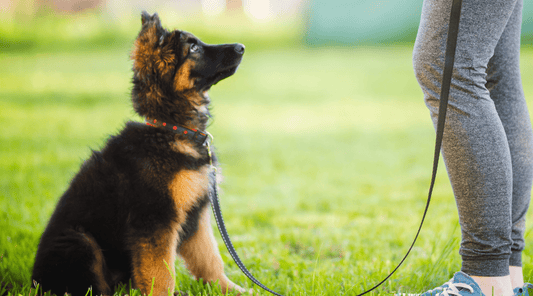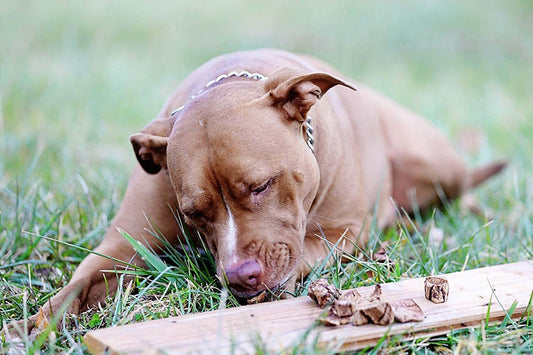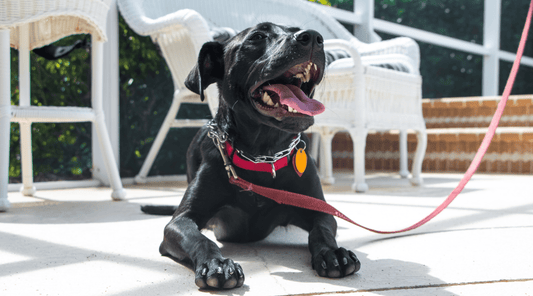How to Teach a Dog to Shake: The One Trick that Makes Everyone Smile
Dawn Miller May 01, 20256 Minute ReadThe first time I taught Bruno to shake, I’ll be honest—I wasn’t expecting much. He’s a big, lovable lab mix with a serious case of clumsy paws and a mild obsession with squirrels. But somewhere between "Sit" and "Down," he slapped his paw into my hand like we’d just closed a business deal.
My terrier Pixie, on the other hand? She had already figured it out from across the room. She was offering her paw for imaginary treats, like she was practicing behind the scenes for her big debut.
That’s the thing about how to teach a dog to shake—it’s easier than you think. And with a little patience (and a lot of healthy dog treats), it turns into one of those go-to tricks that gets everyone at the dog park saying, “Aww, so polite!”
Why Shake Is a Great First Trick
It’s cute. It’s simple. It's a natural dog movement. And best of all, it builds confidence. A trick like this has a dog like Pixie thinking, "Hey, if I can do this. What else can I learn to do—for a treat, belly rub, or 'good dog'?"
Trick training is more than just showing off. It strengthens your bond and feels mentally stimulating to your dog. As you add more tricks to their toolbelt, their life feels more rewarding. So, teaching your dog some skills can ease the anxiety, depression, and destructive behavior typical in bored dogs.
You're giving your dog a new focus—to learn new skills. And shake is just one of those easy tricks that can open doors to a love for dog training for both of you.
Start with the Basics
Before you start learning how to teach dog high five, the wave, paw pumps, or funny dog tricks like play dead, let’s nail the shake.
Here’s how I taught Bruno (and later Pixie, who learned just by eavesdropping on Bruno's training sessions):
1. Teach Sit First
Make sure your dog knows how to sit reliably if they’re still figuring that one out, start there first. Bruno tends to sit automatically if I make eye contact and reach into the treat pouch—so that part’s easy.
2. Gently Lift the Paw
With your dog sitting, say “shake,” then gently pick up one of their front paws. Just a little lift, like a handshake.
3. Mark and Treat
As soon as you lift the paw, say your marker word like "Yes!" or use a clicker. Then immediately give a treat. I always keep a stash of beef lung bites in my pocket, with more in the treat pouch.
Pixie will do backflips—literally—for these single-ingredient dog treats. Yes, there are so many more funny dog tricks that await you after you figure out how to teach a dog to shake.
4. Repeat, Repeat, Repeat
Practice a few times a day (some dogs won't take that long). Keep it light and fun. You want your dog to associate shake with good things (ahem, dog treats...and happy humans).
5. Get Them to Meet Your Hand
Eventually, your pup will start lifting their paw when they hear the cue or see your hand go up. That’s when the real magic happens. Celebrate it like they just won a trophy.
Lifting the paw when your hand is out is a very natural action. You're just using positive reinforcement training to teach them to do it on command.
Extend your open hand toward them and say "shake".
Now, they might also sniff your hand or inspect it for treats. Don't feel discouraged if they think this is what you want. If they don't lift the paw naturally after a few tries, go back to step 2.
If they lift their paw halfway, lower your hand to meet them. Mark and treat.
If they're really struggling, go back to a command they know, like sit or come. Reward them and then end the session. Ending on a high note will make them more eager to try again.
6. Add Shake to Your Daily Routine
One of the best ways to get a trick to stick is to integrate it into their daily life. It becomes a habit for both of you.
So, you might try this, when you get home from work, ask for a "shake" every time. Instead of jumping up on you or getting under your feet, your dog begins to sit when you enter and raises their paw for a shake.
Or if you tend to come home with sacks full of groceries in your arms, add a shake to your leash attachment routine instead. Dogs love micro-routines like these. They're good for dog health and happiness.
7. Teach a Hand Signal
Combining a hand signal with a command word can help your dog learn faster and even become an alternative to the word when your mouth is full or you're on the phone.
In the case of the shake command, the hand signal is pretty obvious. You raise your hand in front of them.
Easy Tricks to Teach Your Dog Once They Know Shake
The great thing about dog tricks is that they build on each other. After you're getting a reliable shake, it's time to add more skills to their standup routine.
How to Teach Dog High Five
Same motion, just higher.
How to Teach Your Dog to Wave
Want to impress the socks off guests or the mail carrier? Try "Wave." Amanda shows you how in this video:
How to Shake Both Paws in Sequence
Alternate hands and cue words like "Left Paw" and "Right Paw." Just decide if you're going to teach them "your" left of theirs before you start. They won't know the difference. But if you're confused about who's left it is, so will they be.
How to Teach Paw Pumps
Simply extend a friendly fist rather than an open hand.
It all starts with that first shake. And if you've been trying to teach your dog other skils like lay down or roll over to no avail, put that one on the backburner for a minute. Teaching a trick like shake gives them something achievable and fun to focus on.
Fun, Not Frustration
Pixie is a classic overachiever. She picks things up quickly but gets bored fast. That’s where rotating rewards help. I’ll offer a bone on longer training days or switch to trachea chews after a good session.
Bruno? He needs shorter sessions and lots of praise. He lights up when I use my marker word ("Yesss!") and gets that tail-thump of joy when I follow through with a snack.
Some dogs respond better to toys, balls, rope pulls, praise, or belly rubs. Most dogs love dog treats, especially real grass-fed beef lung bites. But don't be afraid to experiment and combine rewards to teach your dog all the skills—faster.
If you need more tricks to help even hyper, anxious, and distractible dogs become more trainable, check out this post on how dog bones keep your pup engaged and happy.
Spoiler: Give them a meaty beef marrow dog bone to enhance focus while feeding their instinct to chew without sacrificing your new running shoes.
Or better yet, take the next step and join the 7-Day Dog Training Challenge.
Available On:
Disclosure: This article may contain affiliate links, which means we may earn a small commission if you make a purchase through these links—at no extra cost to you. We only recommend products we trust and believe will benefit you and your K9.






